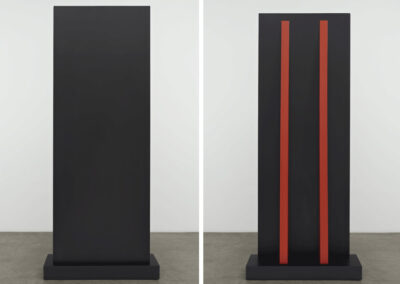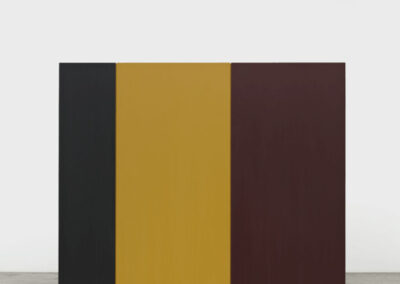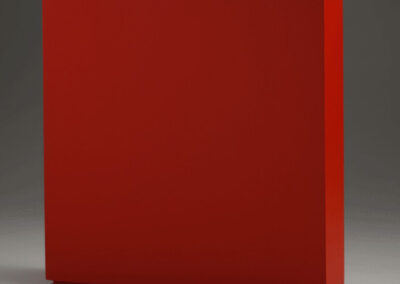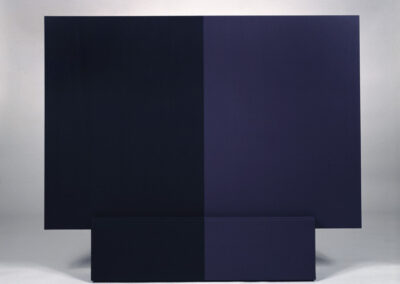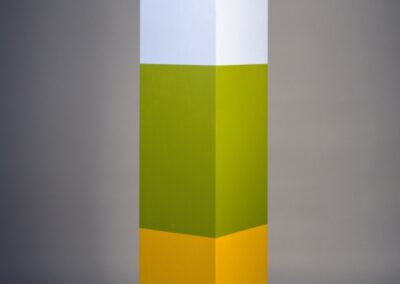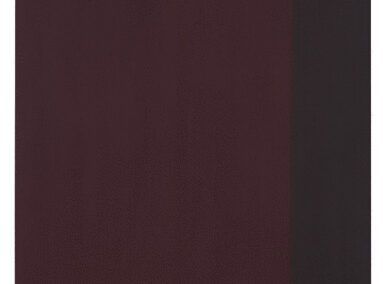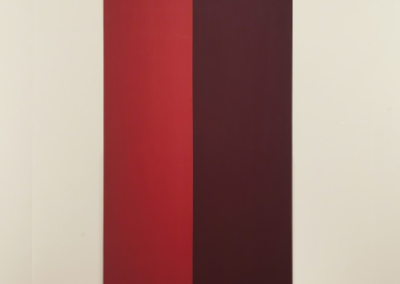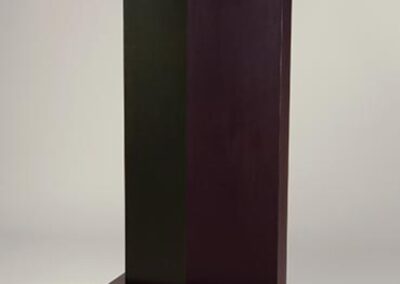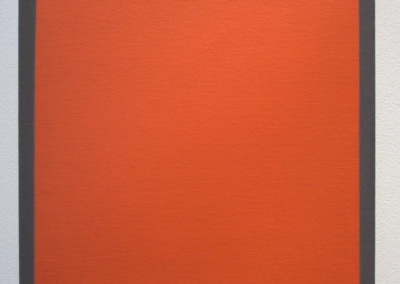Our latest Artist You Need To Know is Anne Truitt (1921 – 2004).
She was an American artist, working primarily in sculpture, of great significance in the mid 20th century, and whose massive, stark – but often striking – works were a combination of industrial or fabricated processes and Truitt’s modifications (she employed several studio assistants, who assisted with the sanding, prepping and painting, after receiving the pieces from a nearby lumber yard where the base sculptures were made to her specifications). Truitt has been described as a major figure of the Minimalist movement, but she’s very notable for how she contrasted to her contemporaries (in that movement) in both form and concept. Her uniqueness was not just in fashioning the works herself, or her use of vibrant, hand painted colours, but also in that she was always concerned with “the relationship between meaning and form. “Art comes into the highest part of the mind, with which we can know the presence of God…But we have to pay attention to that area in order to notice the grace, or even perhaps to attract it.”
-

Hardcastle, 1962
-

First, 1961
-

Knight's Heritage, 1963
-

Parva LXV, 2003
-

Watauga, 1962
-

Morning Choice, 1968
Truitt – like the painter Agnes Martin – can be argued to have more commonalities with Abstract Expressionism, as ‘her art was suffused with emotion, and she wished to engage the viewer on a bodily level in order to elicit the viewer’s emotional response.’ (both citations above are from here)
Truitt obtained a degree in psychology from Bryn Mawr College in 1943 and was a nurse in a psychiatric ward for a short time before fully embracing her interest in art and sculpture. A defining moment for Truitt was when she visited New York in 1961, and encountered the American Abstractionists and Imagists exhibition at the Guggenheim. Her own words, upon encountering works by Barnett Newman’s “zip” painting: “I had never realized you could do that in art. Have enough space. Enough color.” This “marked a change in her practice, as she transitioned into sculpture which relied on pared-down painted wooden surfaces to convey their subtle impact.” (from here) Just as Martin’s works are about a meditative contemplation encapsulated in form and colour, Truitt’s work had a strong spiritual sense. If you’ve ever visited Newman’s Voice of Fire and stood before it’s quiet power, Truitt takes that dominating colour and line off the wall and places it in your immediate physical space.
-

Sea Garden, 1964
-

A Wall For Apricots, 1968
-

Brunt II, 1974
-

Way VII, 1974
-

Spanish Main, 1963
-

View of Anne Truitt: Perception and Reflection, 2009, Hirshhorn Museum and Sculpture Garden
Her first major solo exhibition was at André Emmerich Gallery in New York (1963). Other notable solo exhibitions include the Whitney Museum of American Art in New York (1974), the Corcoran Gallery of Art in Washington, D.C. (1975), the Jewish Museum (1966) and the Baltimore Museum of Art (1992). She also published three books of her writings focused upon the intersection of her artwork and life: these were titled Daybook, Turn, and Prospect. Posthumously, the Hirshhorn Museum and Sculpture Garden in Washington presented a major retrospective of her artworks, in 2009. Truitt was awarded numerous honours, including a Guggenheim Fellowship and five honorary doctorates. In 2003, she was the recipient of the Willa S. Cather Medal.
Truitt’s unique style and sensibility made her somewhat removed from the current or dominant ‘artistic trends’: although she was an artist that the critic Clement Greenberg and fellow Minimalists praised earlier in her career, she also spent decades balancing her artistic practice with raising a family. But, in many ways, “Truitt’s art and her process would be influential for younger artists interested in the poetics of form and material such as Roni Horn and Rachel Whiteread.” (from here).
She passed away at the age of 83, in Washington, D.C. In her voluminous writings on her own practice, and the manner in which her art and aesthetic interacted with other artists and divergent audiences, she offered the following: “It is not true that only artists understand art, for there are in every generation some people who not only understand it but also enhance its reach by appreciation.” (from a wonderful series of pages on Truitt at The Art Story)
More about Anne Truitt can be found here, including many more examples of her artworks. A short video of her exhibition Anne Truitt: Sculpture 1962 – 2004, from the Matthew Marks Gallery, can be seen here.

